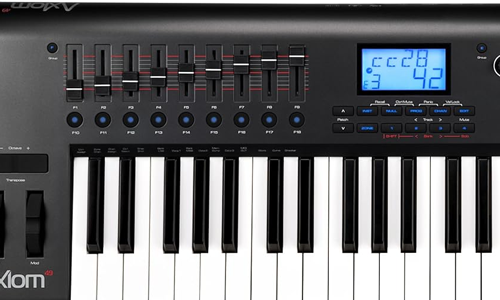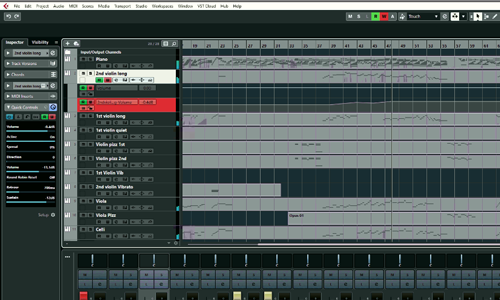Hi Paul. Hope we can connect soon for a lesson. I want to be able to control the levels of the instruments in my Cubase project and have them change throughout the song. What’s the best way for me to do this? – Sarah
I received the above message from Sarah and we set up a time to connect for a one-hour remote lesson later that week.
Sarah is a composer who uses VST orchestral instruments to create her compositions in Cubase. She already knew how to balance the levels of the instruments in her projects using the MixConsole, but she wanted to be able to vary the levels of instruments throughout the piece.
Sarah’s request was straightforward, but (as with almost everything in Cubase) there was more than one way we could achieve what she wanted:
- We could vary the velocities of individual MIDI notes
- We could draw automation data using the Pencil or Line tools
- We could record automation changes by moving the cursor
- We could record movement of the pots/sliders on her controller keyboard as MIDI regions
- We could record movement of the pots/sliders as Quick Control automation data
We had a chat about the resources available in Sarah’s setup and decided that since she had an M-Audio Axiom 49 controller keyboard with physical sliders, it would make sense to use this.

We assigned Cubase’s Quick Controls to the default MIDI CC values being sent by the Axiom’s sliders.
Here’s instruction on how to do that from Steinberg’s online Cubase manual.
I then showed Sarah how to open the Quick Controls section of the Track Inspector and showed her how we could now adjust the volume of tracks using the sliders.
Everything was working correctly, so I showed Sarah how we could arm a track for Automation recording using each track’s W button. (We discussed the importance of turning the W off once she had recorded a section of automation in order to not overwrite previously recorded automation.)
Now that automation recording was working, Sarah made a recording to test out the new setup. Everything worked perfectly!

After a couple more tests Sarah was confident that she could go on to use this method while composing on her own.
Sarah was very pleased that in a single one-hour lesson she had her question answered with an easy solution that did exactly what she wanted.
I told Sarah she was very welcome and would be happy to connect again to answer any other Cubase or music technology questions in the future.
ABOUT THE AUTHOR

PAUL ANDREWS
I’m the owner and lead technician for Audio Support, a small company based in London, UK that connects remotely with clients worldwide to help them with their music technology issues. I’ve run Audio Support since 2005 and in that time I’ve seen and solved thousands of recording studio problems.
Outside of Audio Support, I run music workshops at a local school, play bass in a 90s tribute function band and perform modular synth jams with friends on Twitch.
Get support for similar problems
Get in Touch
- Use WhatsApp, email or the form below to contact us.
- We will confirm if we can help.
- We will arrange a date and time for a remote support session and send a link for you to make payment.
- At the agreed time, our technician will connect via voice call and remote desktop to resolve the issue.
Find out more about how our services work.